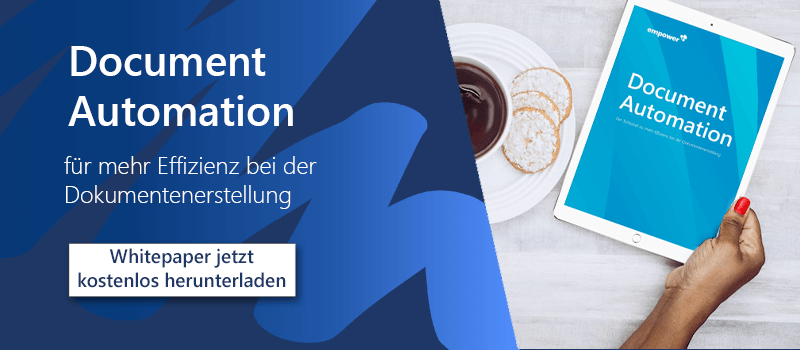Document governance: Enhancing efficiency with software solutions
In today's digital age, organizations of all sizes handle an ever-increasing volume of documents and data. From contracts and financial reports to employee records and customer data, the importance of proper document governance cannot be overstated. Document governance, closely related to document management, plays a pivotal role in ensuring compliance, security, and efficiency within an organization.
In this article, we'll explore the relationship between document governance and document management, delve into the challenges organizations face, and discuss how advanced software solutions can help tackle these challenges effectively.
Document governance vs. document management
Before we dive into the intricacies of document governance, let's clarify the distinction between document governance and document management.
Document Management: Document management involves the systematic organization, storage, retrieval, and tracking of documents throughout their lifecycle. It focuses on improving efficiency by streamlining document workflows, enhancing collaboration, and ensuring easy access to information.
Document Governance: Document governance, on the other hand, extends beyond document management by adding elements of control, compliance, and security. It defines the policies, procedures, and guidelines that govern how documents are created, accessed, shared, and archived within an organization. Document governance aims to minimize risks, ensure data accuracy, and enforce regulatory compliance.
Violations may occur, for example, in unencrypted email communications, inadequate access controls, lack of version control and missing document retention policy. How often are (outdated) documents simply overstored when new content is created or information is shared with people who are not supposed to see it?
The challenges of document governance
Effective document governance is essential for organizations for several reasons, including regulatory compliance, data security, risk mitigation, and operational efficiency. However, achieving robust document governance can be a daunting task, given the following challenges:
- Regulatory Compliance: Organizations in various industries must adhere to specific regulations governing document retention, data privacy, and security. Staying compliant with these regulations is a complex and ever-evolving task.
- Data Security: Protecting sensitive information from unauthorized access, data breaches, and cyber threats is a top priority. Document governance must incorporate robust security measures to safeguard valuable data.
- Data Proliferation: The digital era has led to an explosion of data, making it challenging to manage, classify, and control documents effectively.
- Collaboration Complexity: Collaboration often involves multiple stakeholders, both internal and external. Managing document access and version control in collaborative environments can be chaotic without proper governance.
- Audit Trail and Accountability: Organizations need to maintain a clear audit trail of document activities to track changes, approvals, and user interactions. Accountability is crucial for legal and compliance purposes.
- Inefficient Workflows: Without streamlined document workflows, productivity suffers. Manual, paper-based processes and disjointed digital workflows can lead to inefficiencies and errors.
Tackling document governance challenges with software solutions
Software solutions play a pivotal role in addressing the challenges of document governance. Here's how software can help organizations overcome these hurdles effectively:

- Automated Compliance Monitoring: Advanced software like Microsoft 365 Compliance Center can automatically monitor changes in relevant regulations and compliance requirements. It ensures that document governance policies remain up-to-date, reducing the risk of non-compliance and costly penalties.
- Enhanced Data Security: Software solutions such as Symantec Data Loss Prevention offer robust security features like encryption, access controls, and data loss prevention. These measures help organizations protect sensitive information and maintain data integrity.
- Intelligent Data Classification: Dealing with vast amounts of data is simplified with software's data classification capabilities. Solutions like Titus Classification Suite can categorize documents based on content, making it easier to apply the right governance policies.
- Streamlined Collaboration: Many software solutions provide collaborative tools that enable seamless document sharing and version control. SharePoint or the empower® Content Enablement for instance, offers clear user permissions and audit trails, facilitating efficient collaboration without compromising governance.
- Comprehensive Audit Trails: Software solutions like Druva inSync log all document activities, ensuring a complete audit trail. This feature helps organizations track document changes, approvals, and user interactions for accountability and compliance.
- Optimized Workflows: Software can automate document approvals, routing, and notifications, reducing manual processes and improving productivity. Workflow tools like Nintex streamline workflows, ensuring tasks are completed efficiently.
- Integration with Existing Systems: Most software solutions can integrate with existing systems, including document management systems, enterprise content management systems, and collaboration tools. M-Files or the empower® Suite for Microsoft 365 for example, ensures a seamless transition and coexistence with your current infrastructure.
To make use of the points mentioned above, meta data, which is essentially data about data, plays a crucial role. It adds context and structure to documents, enabling organizations to establish control, ensure compliance, and optimize document management processes. Meta data includes version information, can record details about document activities and enhances the searchability and retrieval of documents based on various attributes like keywords, author, date, or department.
Document governance is a critical aspect of modern business operations, ensuring that organizations remain compliant, secure, and efficient in managing their documents and data. The challenges of document governance can be daunting, but with the right software solutions, organizations can tackle these challenges effectively.
In an era where data is the lifeblood of businesses, investing in robust software solutions for document governance is not just a choice; it's a necessity to thrive in today's competitive landscape while maintaining trust and compliance.
One such software is the empower® Suite for Microsoft 365. It consists of four solutions that support the entire Office document creation and distribution process. Contact us to learn more!
You May Also Like
Related articles

6 must-knows about AI and document automation

Metadata in document management: the key to order in digital chaos


